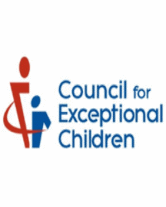Excerpted from Back Off, Cool Down, Try Again: Teaching Students How to Control Aggressive Behavior.
Strategies for Effective Document Management
Documentation of instruction, behavioral interventions, academic and behavioral progress, and meetings with parents, support staff, and community resource personnel is a never-ending job. Although accurate records that support the educational process for a student are legal and ethical necessities, accountability procedures can and must be streamlined. Managing the monstrous mounds of paper requires someorganization. The following suggestions are strategies forcreative, efficient, educationally sound compliance:
- Use theme folders, theme planning forms, and daily lesson plan forms that allow for a fill-in-the-blank response.
Once suitable forms are found or developed to meet the needs of a group, time can be saved by using the forms instead of writing the same headings, resource lists, student names, or schedule over and over. Using an established format saves time because routine information is already in place. - Keep a "wish list" at all times.
Prioritize the items on the list. Have all orderinginformation available. When money is made available, the timeline for using it is often short. Having an overall yearly plan and knowing what you want, why you want it, and where to get it will increase the likelihood that your request will be honored. - Integrate individualized education program (IEP) objectives with local, state, and federal guidelines.
Some districts already have a form for this. If this is notrequired on a formal document, have a checklist available for students, parents, support staff, and other professionals. This checklist can be as simple as the targeted scope and sequence for math, reading, and writing, with IEP objectives for each individual student highlighted. - Keep a weekly grade sheet on a clipboard.
The grade books that are typically issued are too hard to manage in a class for students with emotional and behavioral disorders. A weekly grade sheet allows you to see what has been completed at a glance. Recording grades each day provides immediate feedback to students andkeeps the stacks of ungraded papers from piling up. - Keep line or bar graphs of behavioral points, if a point system is being used.
A long string of numbers is usually meaningless to a student, parent, or professional outside the immediate setting. A graph gives an immediate picture of a student's progress. Because it is easier to identify when patterns are present, the graph enhances feedback to students. - Along with a record of points (if points are being used), keep anecdotal information in some time-efficient way.
This information can be developed into a checklist with space at the bottom for a brief narrative statement. These records should be available to you at all times during the day. Waiting until the end of the day or week to fill them out wastes time, and valuable information is often forgotten.
Use an Incident Report when an incident occurs write down the date, time, and people involved immediately. Quickly place check marks next to the items on the form that describe the student's actions. A narrative report can be added later, but do not wait longer than necessary. The form should also include information about contact with a parent oranother agency. If none is made, that can be indicated. If contact with others is made, the details should be recorded.
The disciplinary action taken is another essential piece of information that should be added to the form. Again, the standard hierarchy of consequences can be listed. All you need to do is check the one taken and record the amount of time the student will be expected to complete, if the student is required to be in time out. - Implement a system for recording positive growth beyond simple charting of points.
The incident reports give a clear picture of problem behaviors and the charts illustrate patterns of behavior, but a weekly narrative of positive events is needed to complete the profile. The back of the point graph can be divided into weekly sections. These positive events can be recorded during affective instruction as students discuss successes. Students can be asked to write their own list of accomplishments. You can then add a brief note. - Use a telephone log and a conference documentation form.
The forms should include a date, who was involved, a brief description of the topics covered, and signatures. Complete the form as you conduct the conference or telephone conversation, or immediately after. - Have a system in place.
Otherwise, with IEPs, academic checklists, incidentreports, point graphs, grades, positive comments, and conference forms, the paperwork can become unmanageable. Establish a notebook (not a folder) for each student. Place subject dividers in each notebook. Have a file folder labeled "To Be Filed." Put all student forms in that folder as soon as they are completed. - Before school starts for the year, make an associate's handbook.
Provide the associate with copies of all forms, instructions on where to place them in the student notebooks, and any other information related to instruction and behavior management that he or she needs to know. - Keep a calendar.
Due dates for county and federal paperwork are important.Funding for special programs often rests on these documents. A calendar can help in prioritizing instructional and administrative concerns. - Either put it away, or throw it away!
When it comes to the incredible amount of paper that accumulates, the stacks can become unmanageable too quickly. Partof the secret of managing this less appealing aspect of teaching is to control it rather than having it control you.






